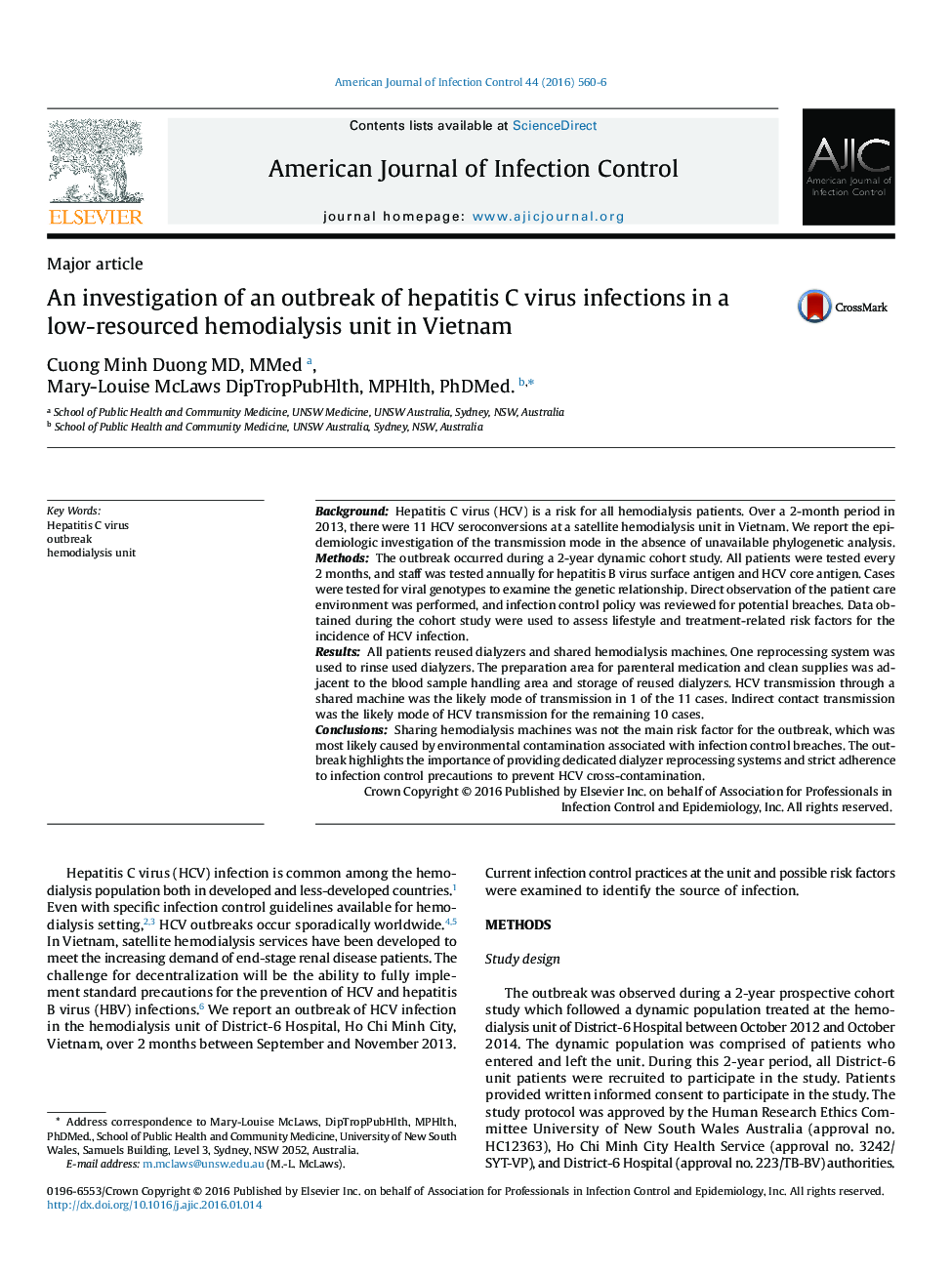| کد مقاله | کد نشریه | سال انتشار | مقاله انگلیسی | نسخه تمام متن |
|---|---|---|---|---|
| 5866447 | 1563459 | 2016 | 7 صفحه PDF | دانلود رایگان |
- Sharing hemodialysis machines did not attribute to the hepatitis C virus outbreak.
- Indirect contact was the likely mode of hepatitis C virus transmission.
- Dedicated dialyzer rinsing system must be available for hepatitis C virus-infected patients.
- Infection control audits and a validation system must be a policy.
- Strict adherence to infection control policy prevents hepatitis C virus cross-transmission.
BackgroundHepatitis C virus (HCV) is a risk for all hemodialysis patients. Over a 2-month period in 2013, there were 11 HCV seroconversions at a satellite hemodialysis unit in Vietnam. We report the epidemiologic investigation of the transmission mode in the absence of unavailable phylogenetic analysis.MethodsThe outbreak occurred during a 2-year dynamic cohort study. All patients were tested every 2 months, and staff was tested annually for hepatitis B virus surface antigen and HCV core antigen. Cases were tested for viral genotypes to examine the genetic relationship. Direct observation of the patient care environment was performed, and infection control policy was reviewed for potential breaches. Data obtained during the cohort study were used to assess lifestyle and treatment-related risk factors for the incidence of HCV infection.ResultsAll patients reused dialyzers and shared hemodialysis machines. One reprocessing system was used to rinse used dialyzers. The preparation area for parenteral medication and clean supplies was adjacent to the blood sample handling area and storage of reused dialyzers. HCV transmission through a shared machine was the likely mode of transmission in 1 of the 11 cases. Indirect contact transmission was the likely mode of HCV transmission for the remaining 10 cases.ConclusionsSharing hemodialysis machines was not the main risk factor for the outbreak, which was most likely caused by environmental contamination associated with infection control breaches. The outbreak highlights the importance of providing dedicated dialyzer reprocessing systems and strict adherence to infection control precautions to prevent HCV cross-contamination.
Journal: American Journal of Infection Control - Volume 44, Issue 5, 1 May 2016, Pages 560-566
